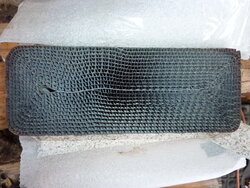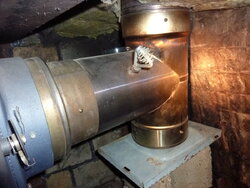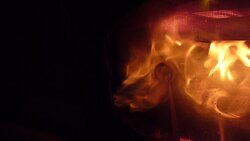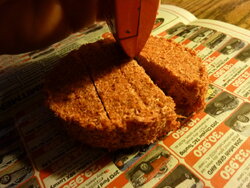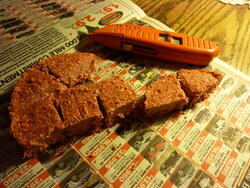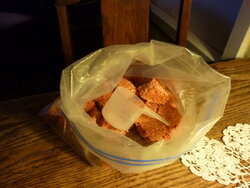I have not been on this forum for a long time, since my Woodstock Soapstone Fireview was new and I was learning to use it properly. Now I have had five winters on it and I just bought a replacement combustor to have on hand when my original combustor needs to be replaced.
I would appreciate comments and advice from experienced combustor stove owners on how to tell when a combustor needs to be replaced. I remember when I first got my Fireview there were a lot of threads about combustors dying early, but mine has seemed to work fine right through the end of last winter.
I live near Woodstock Soapstone. When I picked up my new combustor they said the best way to tell when it needs to be replaced is to watch your stovetop thermometer. They said if you switch over to the combustor at 250 F and turn your damper down to about 1 the thermometer should go on up to 350 F or above if the combustor is still working properly. I use a long thermometer that goes in the back of my stove and measures the temperature in the flue exhaust area right behind the combustor. I switch over at about 700 F on that thermometer and my combustor usually glows bright red for a while right after I switch over and turn down the damper. The flue exhaust temp usually rises to 850 F or so after I switch over and then dies down to lower temps as the wood charge dies down to glowing coals.
My plan is to watch the two thermometers this winter and look for signs that one or both are not rising 100 degrees or more after I switch over to the combustor.
What do others think or suggest?
One other note on lighting my stove -
I use the great discount deals on unwrapped Super Cedar fire starters from Northwestern Fuels. I use 1/4 disk for each fire and I have found I can start fires with three or more full-sized splits and only a very small amount of kindling. I leave my door cracked 1/8 inch until the flue temp hits 700 F, then I close the door, switch over to the combustor, and turn down the damper to 1. On very cold days with really strong draft I turn down the damper to a little below 1.
I would appreciate comments and advice from experienced combustor stove owners on how to tell when a combustor needs to be replaced. I remember when I first got my Fireview there were a lot of threads about combustors dying early, but mine has seemed to work fine right through the end of last winter.
I live near Woodstock Soapstone. When I picked up my new combustor they said the best way to tell when it needs to be replaced is to watch your stovetop thermometer. They said if you switch over to the combustor at 250 F and turn your damper down to about 1 the thermometer should go on up to 350 F or above if the combustor is still working properly. I use a long thermometer that goes in the back of my stove and measures the temperature in the flue exhaust area right behind the combustor. I switch over at about 700 F on that thermometer and my combustor usually glows bright red for a while right after I switch over and turn down the damper. The flue exhaust temp usually rises to 850 F or so after I switch over and then dies down to lower temps as the wood charge dies down to glowing coals.
My plan is to watch the two thermometers this winter and look for signs that one or both are not rising 100 degrees or more after I switch over to the combustor.
What do others think or suggest?
One other note on lighting my stove -
I use the great discount deals on unwrapped Super Cedar fire starters from Northwestern Fuels. I use 1/4 disk for each fire and I have found I can start fires with three or more full-sized splits and only a very small amount of kindling. I leave my door cracked 1/8 inch until the flue temp hits 700 F, then I close the door, switch over to the combustor, and turn down the damper to 1. On very cold days with really strong draft I turn down the damper to a little below 1.


 I can cut it off to 9" from what I understand, but it may erode quicker without the protective coating on the end, I don't know.
I can cut it off to 9" from what I understand, but it may erode quicker without the protective coating on the end, I don't know.